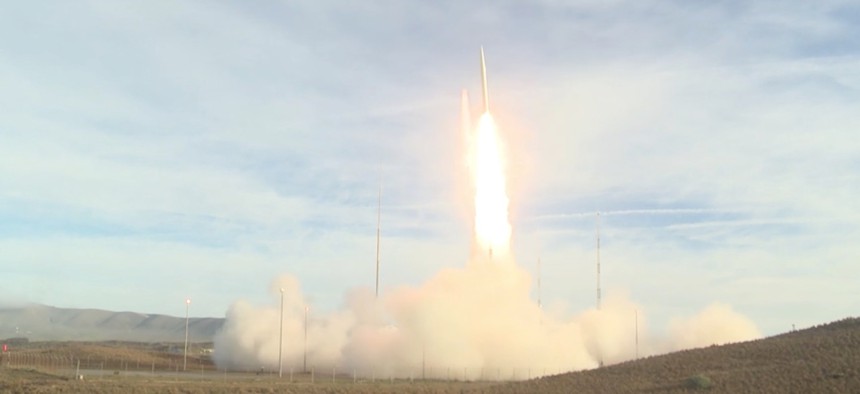
A screen grab of the Dec. 12 flight test of U.S. ground launched missile. USAF
Pentagon Test-Fires 2nd INF-Banned Missile
The Air Force ran Thursday's launch from a static pad, which followed the Navy's August test from a mobile launcher.
The United States has test-launched a second missile banned by the Intermediate-Range Nuclear Forces treaty, which the Trump administration withdrew from earlier this year.
Launched at 8:30 a.m. local time from a pad at Vandenberg Air Force Base, California, the “prototype conventionally-configured ground-launched ballistic missile” flew more than 500 kilometers, and landed in the ocean, Lt. Col. Robert Carver, a Pentagon spokesman, said in an emailed statement.
“Data collected and lessons learned from this test will inform the Department of Defense's development of future intermediate-range capabilities,” Carver wrote.
The military posted a video of the test.
The INF Treaty banned land-launched missiles with a range of 500 to 5,500 kilometers.
The tested missile was produced by the U.S. Air Force and the Pentagon’s Strategic Capabilities Office, a shop that focuses on modifying existing weapons for new types of missions.
The previous test of an INF-banned missile happened in August when the Navy and Strategic Capabilities Office fired a modified Tomahawk land attack missile from a mobile ground-launcher.
Thursday’s test comes two days after contractor Lockheed Martin said it “successfully tested its next-generation long-range missile designed for the U.S. Army's Precision Strike Missile (PrSM) program.” In that test, a missile was fired from a High Mobility Artillery Rocket System launcher at at White Sands Missile Range, New Mexico, and “flew approximately 240 kilometers to the target area,” a Lockheed statement said. “All test objectives were achieved.”
